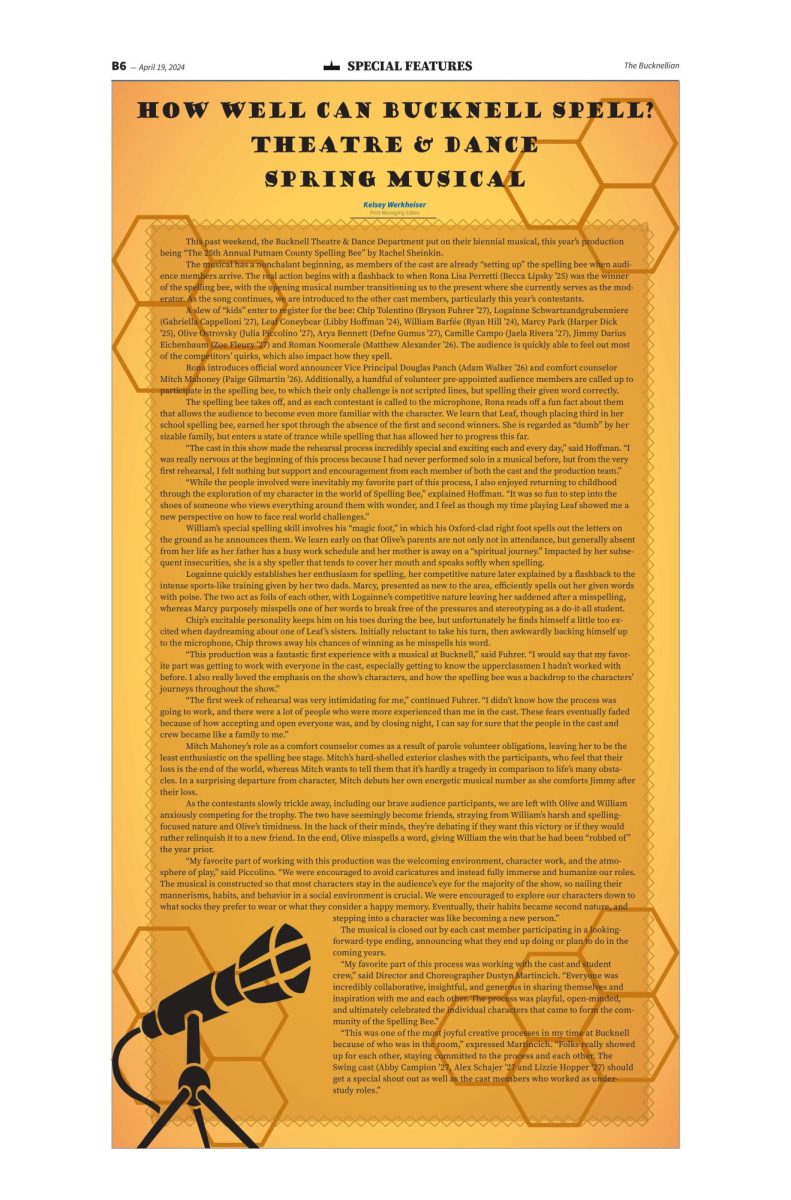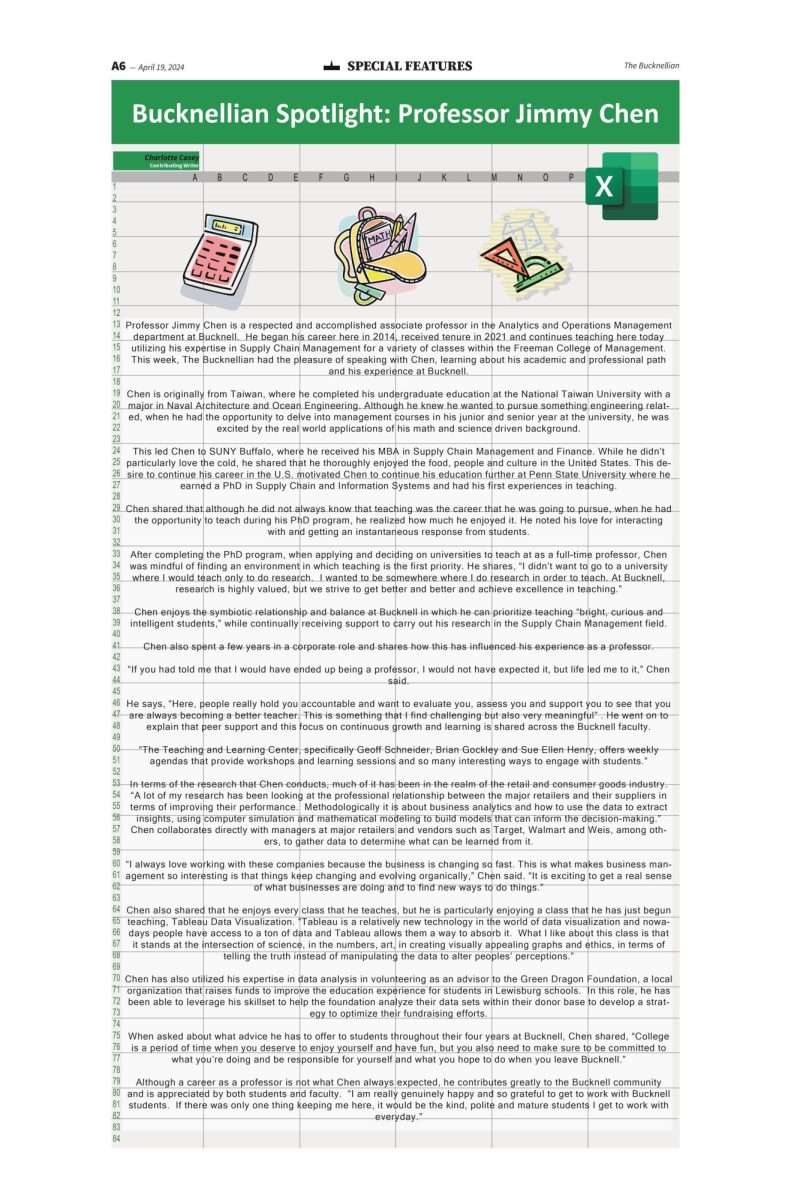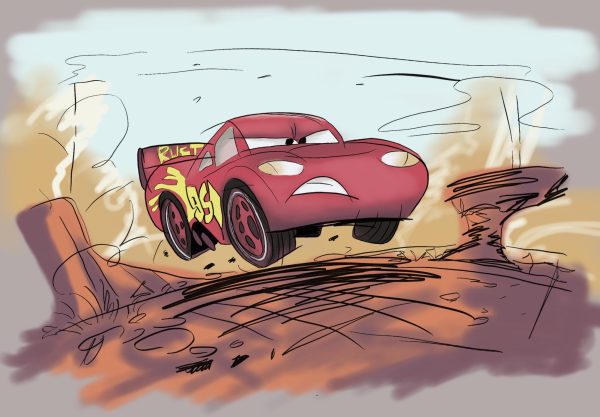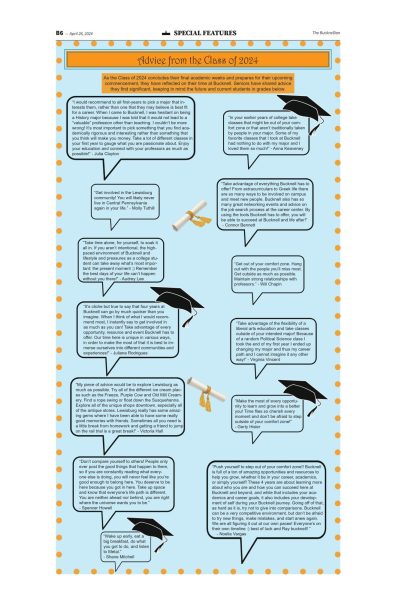If the Hokas fit, wear them
April 28, 2023
It is not everyday that a brand is able to break through the staples that consumers have been loyal to for decades. Especially in the sneaker industry, breaking through the fortress that Nike, Adidas, New Balance and Asics have built up seems impossible.
So when Hoka surged in popularity over the past decade and especially since the start of the pandemic, it’s important to examine why and how. Will Hoka be another passing trend, or are the chunky sneakers that have come to take over Bucknell’s campus here to stay?
The key factor that seems to have contributed to Hoka’s success is their versatility. So many groups can benefit from Hoka’s support and design. The New York Times explains that Hoka’s first shoes were designed for steep hill and mountain runners. As they began to take off, older people became major consumers for the brand due to the increased support and comfort. Hospital workers have even swapped clogs for Hokas, according to Dr. Onel with The New York Times.
And as we have seen more recently, Hoka has gained traction with younger consumers that Business Insider puts between ages 18 and 34. Looking around campus, you cannot walk between class and home without spotting someone in Hokas. This might come as a result of the chunkiness of the shoe that has recently become trendy, but I do think that Hoka has played into their growth in popularity among younger consumers through the introduction of bright colors into their designs as well. Their collaboration with Free People Movement also highlights their desire to expand their demographic.
I respect Hoka as a product, but just like any other shoe on the market, it’s not for everyone. I bought my first pair last summer when their popularity was unquestionable. I fell in love as soon as I put them on. It actually felt like I was walking on a cloud. I go on long walks everyday, so I typically wear through sneakers every few months. I had been loyal to Adidas’ line of Ultraboosts for years, as they offer great support and usually lasted around six months, but Hoka’s seemed like they were ending that purchasing pattern.
After only two or three months of wear, I noticed that the fabric in the back inside of the shoe was ripping, and I was starting to get blisters from the plastic rubbing against the back of my heel. I figured that I had just bought a size too big and bought another pair in a smaller size. To my dismay, I encountered the same problem a few months later.
And when I went to the podiatrist to get new orthotics around that same time, my doctor informed me that Hokas are not shoes that I should be wearing, as they actually counter the effects of my orthotics. Additionally, she deduced the worn out fabric behind my heel to my sharp heels rather than incorrect shoe size or poor quality. So, if you have orthotics for a high arch or particularly pointy heel bone, then these shoes might not be right for you.
My unique case highlights the subjectiveness of trends, especially when it comes to footwear. Everyone varies in the type of sneaker they need based on their activities and the shape of their feet.
Still, Hoka seems to have shaken up the sneaker space, and they aren’t done. According to Business Insider, “wholesale revenue for Hoka increased 83 percent, while direct-to-consumer sales more than doubled” and their parent company Deckers has raised their revenue guidance for this year due to expectations of continued growth. As we watch Hoka expand into multiple consumer groups, it makes sense that Deckers would expect growth to continue, even if the shoe is not right for everyone.
If the shoe fits, wear it. And if it doesn’t, still acknowledge the magic that has roped in so many others and steered them away from Hoka’s strong, long-standing competitors.
























Jo • May 2, 2023 at 6:18 am
Try the Bondi 8. It has a deeper heel well. My orthotic fits nicely and I have no heel slippage.
Jacqueline • Apr 28, 2023 at 1:22 pm
Love this!!